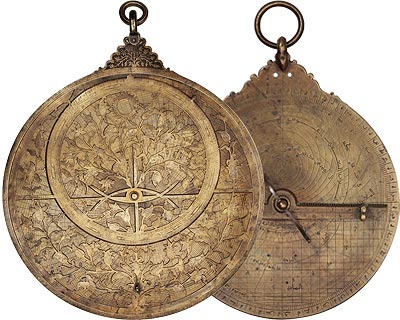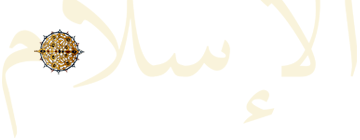 |
 |
 |
Early
Islam: 7th – 10th C
Less than a century after the death of
Mohammed in 632, a unified Islamic empire stretched
across the Middle East and North Africa, and into Spain
and Central Asia. While the
spread was rapid, local cultures and traditions were
generally respected and assimilated, and their influence
can be seen in the arts.
Local craftsmen introduced their older
traditions – particularly geometric patterning
– into designs for objects, textiles, architecture and
architectural decoration. Royal patronage fostered the
production of mosaics, wall paintings, ceramics and glass
objects. These artistic influences of the preceding Persian
Sassanid and Byzantine Empires are represented in the
exhibition by a truly unique display of colourful ceramics,
lustre painted glass and rarely preserved finely woven
textiles.
Planispheric astrolab designed by
the instrument-maker Muhammad Mahdi al-YazdiIran, dated
060 AH (1650–51 AD) |
|
 |
|
|
|
 |
 |
 |
The
Age of the Empires: 16th – 19th C
The Islamic world was dominated by three
great dynasties during this period. The Ottoman Empire
controlled the Arab lands and much of Eastern Europe.
The Safavid Empire prevailed in parts of Iran, the
Caucasus, central Asia and Afganistan. In northern
India, the Mughal Empire came to dominate the subcontinent
and was responsible for great artistic achievements,
including the Taj Mahal.
These multi-ethnic empires controlled vast
resources and royal palaces were the hub of artistic
production where the arts of the book took precedence.
In Mughal India, schools of miniature painting developed,
and portrait painting was particularly popular in Qajar
Iran (18th-19th century). Exhibition highlights are the
Shahnamah (the Book of Kings), colourful enamelled objects
from Mughal India, intricate jewelled pieces studded
with precious stones, and finely woven carpets and textiles.
Pan-box (pandan) Mughal
India, early 18th century AD |
|
 |
|
|
 |
 |



